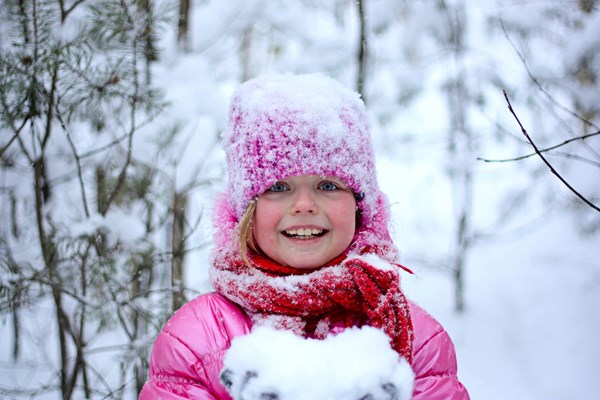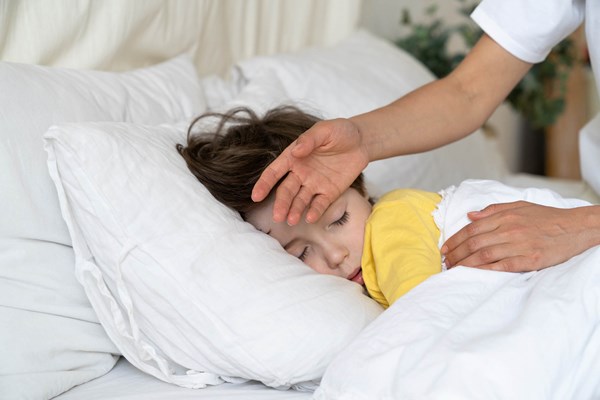Seasonal illness in childcare settings
It’s that time of year again…the joyful season of sniffles, coughs, colds, and sneezes! We know that the winter period increases likelihood of seasonal illness for children and their carers (including parents, family members, school and early years professionals). But why is that?
Scientists have found that, as the days get darker, public transport usage increases as a way to avoid poor weather conditions. This heightens the risk of exposure to illness as large groups of people are often cramped together in warm, humid conditions. Winter also means that we spend more time indoors, resulting in closer contact with others and a reduction in our Vitamin D intake via natural sunlight. Finally, we also know that ventilation indoors decreases in winter weather as windows and doors are less likely to be opened, limiting the fresh air circulation which usually occurs in warmer months. These habitual and environmental factors mean we have greater exposure to seasonal germs and a lower immune system to fight them off.

For children who are yet to build up a strong immune system, seasonal illnesses are even easier to transmit and pick up. This, partnered with their lack of independent hygiene skills, means that children are often a one-stop shop for germs and illnesses!
The three major types of germs we usually hear about are bacteria, viruses, and fungi. Children most commonly catch viral and bacterial illnesses, such as sore throats, colds, flu, ear infections, throat infections and croup.
After having an infection or virus, antibodies created to initially fight the virus remain in the body and are used towards fighting off the next potential virus exposure. This is why when children attend a new school or early years provision they are often ill in the first few months; they are exposed to new germs or virus strains that the body has not yet developed antibodies against. Over time, children’s army of antibodies becomes vast enough to fight off many of the infections they come up against.
While we can ensure that the resources we provide children and the environments in which we care for them are cleaned regularly, minimising all exposures to germs and viruses can actually be harmful for the majority of children. A strong immune system enables a child to have the antibodies required to fight off illness or minimise the effects if a virus is picked up (i.e. less severe symptoms). As already identified, to build up a strong immunity to viruses children must first have some exposure to the germs which cause them. A sterile environment will not provide children with the long-term protection needed in childhood and beyond.
Some families may request that their child does not access outdoor learning environments when they have a virus or seasonal illness (such as a common cold). This is due to a misguided view that cold weather makes you more ill. In fact, as described earlier, the Vitamin D gained from being outdoors can boost your immune system. Additionally, while a child’s immune system is weaker from fighting a virus or infection, being outdoors limits the chances of the child catching a second infection as, when they’re outside, they are in a well ventilated space where infections from others are less likely to be transmitted.
Strep A and Scarlet Fever
As reported in current news, Strep A cases have significantly increased this year. This is due in part to the limited social interactions many children had during the peak Covid-19 period. Many of the children now experiencing Strep A would have usually been exposed to this at a younger age via social mixing and would have developed the antibodies to fight it. It is reported that children currently have fewer varied antibodies than pre-pandemic children of the same age. Of course, limiting social interactions and infections was a key strategy in staying safe when in the midst of the pandemic so this change in infection levels/antibody development is just one of the aftershocks we are seeing as a result.

With Strep A cases on the rise, the UKHSA have recently said that there has also been a significant upsurge in associated scarlet fever cases. There were 851 scarlet fever cases reported in the week of 14 to 20 November 2022, compared with an average of 186 for the same period in previous years (The Guardian, 2 Dec 2022). This is because the same bacteria which causes Strep A also causes scarlet fever; the bacteria sometimes make a toxin (poison), which causes a rash - the “scarlet” of scarlet fever. As well as scarlet fever, Strep A bacteria cause other respiratory and skin infections such as strep throat and impetigo.
Infection prevention and control measures
Infection prevention and control measures aim to interrupt the cycle of infection by promoting the routine use of good standards of hygiene, thus reducing transmission rates. This is usually through:
- immunisation of children and staff (see the NHS vaccination schedule for children in the UK),
- good nose cleaning and hand washing/sanitising,
- making sure the environment is kept clean and additional cleaning takes place if outbreaks are identified,
- ensuring anyone infectious isolates for the advised period of time,
- reviewing the air circulation inside so that fresh air is routinely brought into the space whenever possible,
- wearing PPE when coming into contact with any body fluids,
- ensuring policies reflect the most up-to-date guidance from the government.
Where a case of infection is known, measures aim to reduce or eliminate the risk of spread through information and prompt exclusion of a case. The UKHSA has produced a range of guidance for provisions under the umbrella focus of ‘Health protection in children and young people settings, including education’.
Settings should regularly review their exclusion periods for infectious illnesses in line with government guidance. This guidance can be found under the ‘Managing specific infectious diseases: A to Z’ heading on the above link. The guidance details many common childhood illnesses or infections and clarifies if an exclusion period is required for that illness.
Downloadable posters for schools and early years provisions are available from the NHS website to help settings in managing infectious diseases.
To help parents consider if their child is too ill to attend school or early years provision, the NHS has produced a parent-friendly information page on some of the more common seasonal illnesses: https://www.nhs.uk/live-well/is-my-child-too-ill-for-school/
Where further guidance or information is required, or if an outbreak of an illness has occurred, professionals should contact their local Health Protection Team (HPT) for further support and guidance. Information on how to find the contact details for a local HPT are available online via a postcode checker: https://www.gov.uk/health-protection-team.